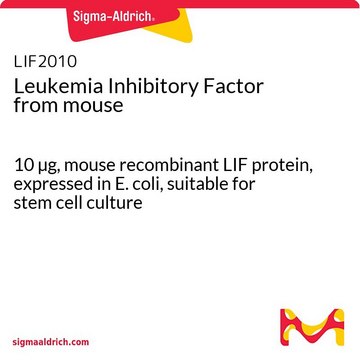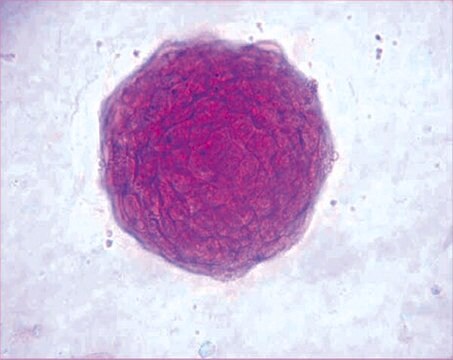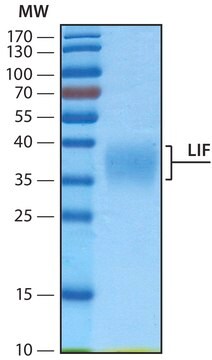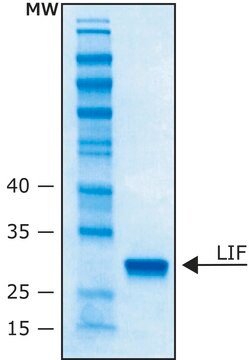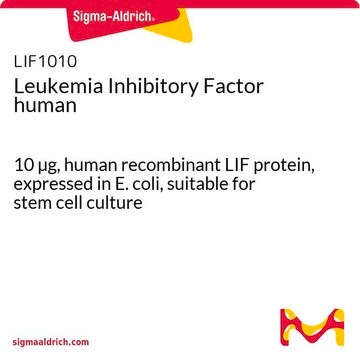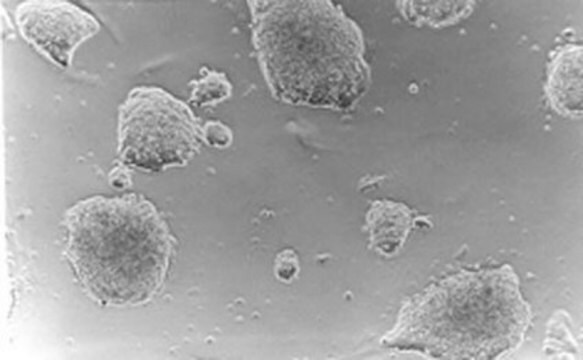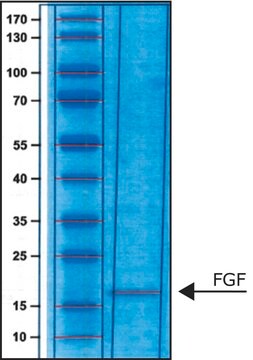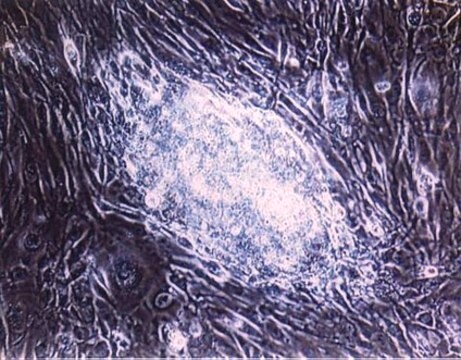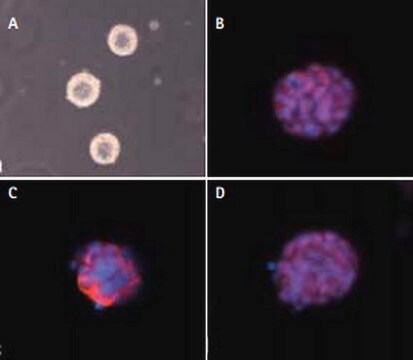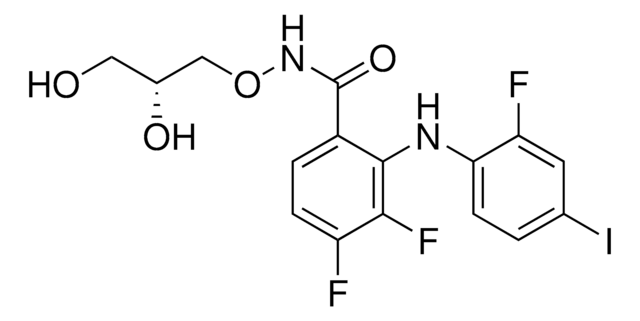L5158
Leukemia Inhibitory Factor from mouse
≥95% (SDS-PAGE), recombinant, expressed in E. coli, buffered aqueous solution, suitable for cell culture
Synonym(s):
Mouse LIF, Mouse Leukemia Inhibitory Factor, Murine LIF, mLIF, LIF
About This Item
Recommended Products
Product Name
Leukemia Inhibitory Factor from mouse, LIF, recombinant, expressed in E. coli, 10 μg/ml, buffered aqueous solution, suitable for cell culture
recombinant
expressed in E. coli
Quality Level
Assay
≥95% (SDS-PAGE)
form
buffered aqueous solution
quality
endotoxin tested
technique(s)
cell culture | mammalian: suitable
storage temp.
2-8°C
Looking for similar products? Visit Product Comparison Guide
Application
- as a component of enriched co-culture media
- as a supplement in Dulbecco′s modified eagle′s medium (DMEM)/F12 medium for culturing heart cells
- as a component in maintenance medium for maintaining embryonic stem cells
- to treat ovaries in ovarian culture
Biochem/physiol Actions
Physical form
Analysis Note
Legal Information
Storage Class Code
11 - Combustible Solids
WGK
WGK 3
Flash Point(F)
Not applicable
Flash Point(C)
Not applicable
Personal Protective Equipment
Choose from one of the most recent versions:
Already Own This Product?
Find documentation for the products that you have recently purchased in the Document Library.
Customers Also Viewed
Articles
Leukemia Inhibitory Factor (LIF) is a stem cell growth factor used for the in vitro culture of pluripotent mouse embryonic stem cells (ES cells).
Our team of scientists has experience in all areas of research including Life Science, Material Science, Chemical Synthesis, Chromatography, Analytical and many others.
Contact Technical Service